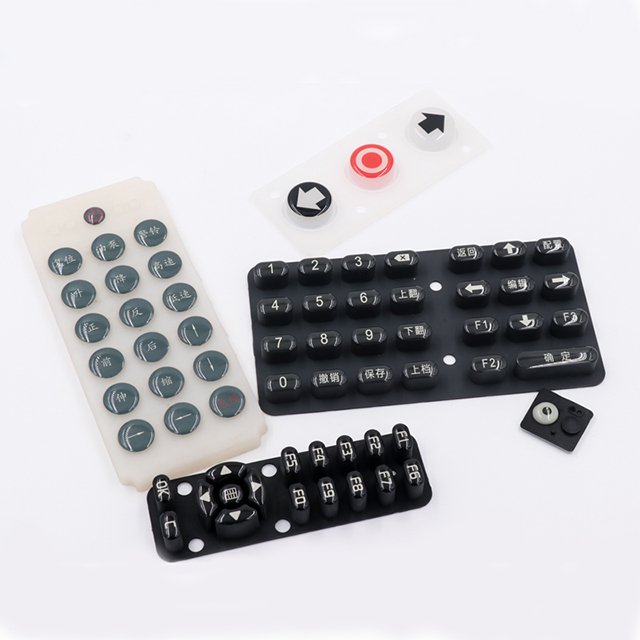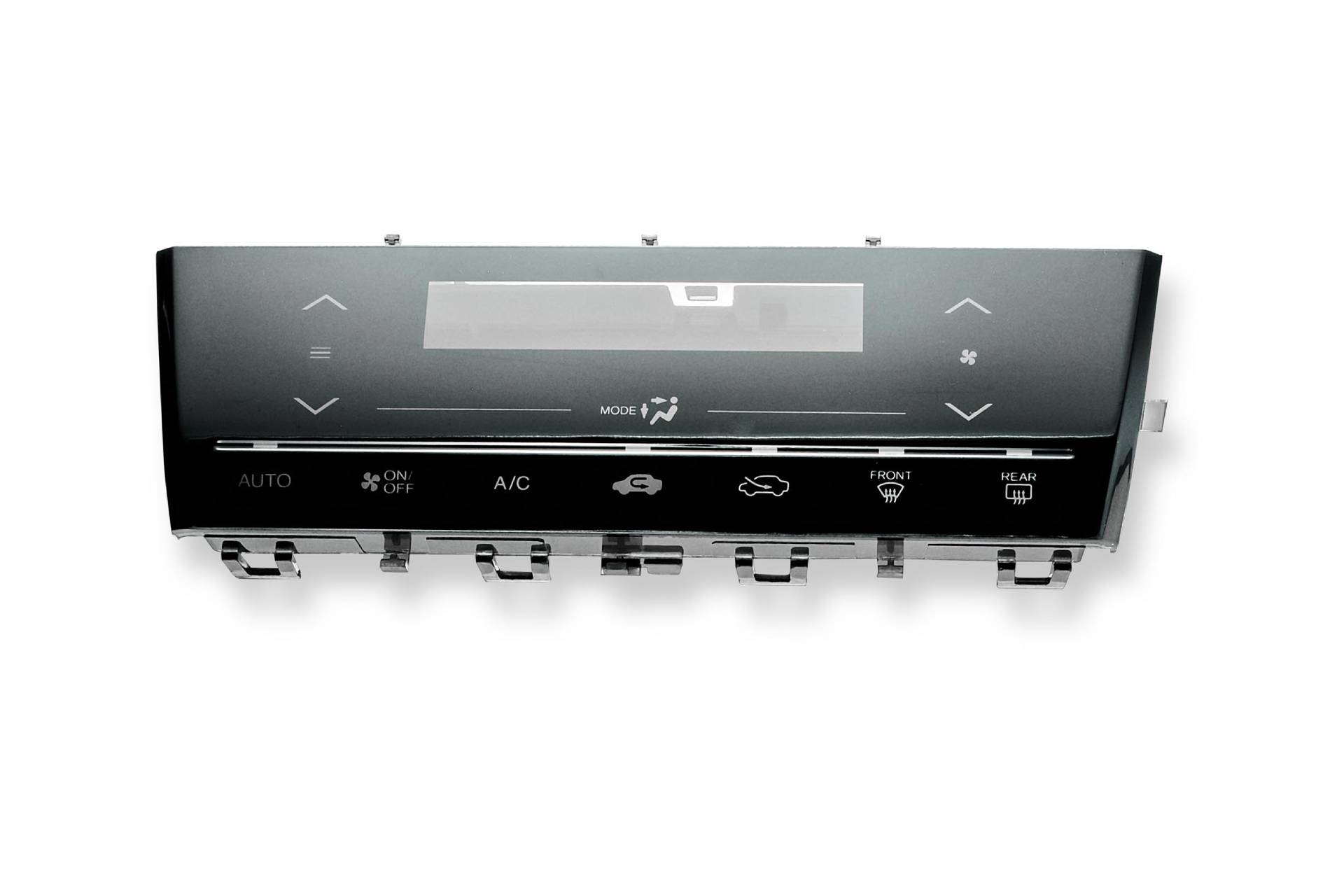Finding the Diverse Utilizes and Keys In of Rubber Keypads in the Technology Landscape Today
Rubber keypads have developed themselves as necessary elements in various technological applications. Their versatility makes them suitable for consumer electronic devices, industrial makers, and clinical gadgets. As these keypads remain to develop, brand-new modification choices and style patterns emerge. This triggers a more detailed exam of their advantages and making processes. Comprehending these elements may disclose why rubber keypads remain a preferred choice in the technology landscape. What lies in advance for this versatile element?
Overview of Rubber Keypads
Rubber keypads serve as a basic element in various digital tools, supplying a responsive user interface for user interaction. These keypads are typically made from silicone or rubber products, which give adaptability and durability. Their design commonly incorporates raised icons or letters, boosting usability by enabling customers to really feel the secrets - Rubber Keypads. Rubber keypads are immune to dust, moisture, and use, making them ideal for demanding atmospheres
Additionally, they can be personalized regarding shape, shade, and dimension, allowing producers to create distinct interfaces tailored to certain items. The manufacturing process frequently entails techniques such as molding and printing, making certain high-grade output. Because of this, rubber keypads not only improve functionality but additionally add to the general aesthetics of the device. With these features, rubber keypads remain a popular choice for both suppliers and customers, emphasizing their significance in the innovation landscape.
Typical Applications in Consumer Electronic Devices
While numerous electronic gadgets rely upon touchscreens for customer interaction, rubber keypads continue to play an essential function in customer electronic devices. These keypads are widely utilized in devices such as remote controls, video gaming controllers, and home appliances, where tactile feedback boosts user experience. Their toughness and resistance to wear make them excellent for gadgets often based on hefty use.
Rubber keypads are also prominent in smart phones and portable gizmos, where small styles require receptive and dependable input approaches. The capacity to customize the form and structure of rubber keypads permits suppliers to create special designs that attract customers. Additionally, the soft touch of rubber gives convenience during extended use, making these keypads a recommended selection for gadgets requiring extensive communication. On the whole, rubber keypads continue to be an important element in the customer electronics landscape, incorporating capability with user-friendly attributes.
Function in Industrial and Medical Equipment
Rubber keypads play a vital role in both industrial and medical devices, supplying resilience and integrity sought after atmospheres. In industrial settings, they are commonly utilized in control panels and equipment, boosting operator interaction with complicated systems. Similarly, in the clinical area, rubber keypads help with user-friendly interfaces for gadgets that require precision and health.
Industrial Devices Applications
Keypads play a crucial role in the performance and user experience of industrial and clinical tools. In commercial setups, rubber keypads offer a robust interface for equipment and control systems, permitting operators to quickly input commands and change settings. Their resistance to dirt, dampness, and chemicals assurances dependability under severe problems typical of factories and making plants. In addition, the tactile responses used by rubber keypads enhances user interaction, reducing the possibility of input errors. Along with standard machinery, these keypads are integral in automated systems and robotics, where accuracy is paramount. The flexibility of rubber keypads in numerous commercial applications underscores their relevance in enhancing functional effectiveness and guaranteeing security in complex settings.
Medical Gadget Combination
As clinical tools significantly require straightforward interfaces, the integration of rubber keypads has actually ended up being necessary in making sure effective interaction in between healthcare professionals and devices. These keypads give tactile feedback, assisting in instinctive procedure also in high-pressure atmospheres. Their toughness and resistance to rough cleaner make them optimal for medical setups, where health and longevity are crucial. In addition, rubber keypads can be customized to consist of different shapes, dimensions, and shades, boosting aesthetic acknowledgment and accessibility for individuals. This adaptability allows for the creation of specialized controls tailored to particular clinical features, enhancing overall performance. The function of rubber keypads in medical tool combination not only enhances functionality yet likewise promotes client security and operational integrity in medical care atmospheres.
Modification Options and Style Trends
Recent design patterns highlight minimalism and functional designs, prioritizing individual convenience and user-friendly interaction. Customized logo designs and branding can be integrated right into keypads, enabling business to maintain a cohesive brand name identity across their items. In addition, advancements in making techniques, such as silicone molding, have actually made it much easier to achieve elaborate styles and customized designs.
Benefits of Rubber Keypads Over Various Other Types
Rubber keypads are also recognized for their longevity and resistance to ecological variables. They can withstand temperature, dirt, and moisture changes, making them optimal for outdoor or industrial setups. In try this addition, rubber keypads are frequently quieter than their plastic or metal equivalents, reducing environmental pollution in shared atmospheres.
Moreover, the cost-effectiveness of rubber keypads makes them an eye-catching choice for suppliers. Their light-weight nature contributes to decrease shipping costs, while their adjustable styles accommodate certain branding needs. Generally, rubber keypads represent a functional and trustworthy solution in the technology landscape.
Production Techniques for Quality and Sturdiness
In the manufacturing of rubber keypads, the choice of appropriate materials and molding processes plays an essential duty in determining general quality and resilience. Various molding strategies, such as compression and injection molding, considerably affect the end product's efficiency. Recognizing these variables is vital for achieving optimal cause rubber keypad manufacturing.
Molding Processes Explained
A range of molding processes play a vital role in the manufacturing of rubber keypads, guaranteeing both top quality and sturdiness. The most common strategies consist of compression molding, transfer molding, and injection molding. Compression molding involves putting rubber in a heated mold, where warmth and pressure shape it right into the wanted kind. Transfer molding allows for more accurate control over material circulation and is appropriate for intricate designs (Rubber Keypads). Shot molding, known for its rate and performance, injects liquified rubber right into a mold and mildew under high pressure, generating high-volume components with consistent top quality. Each technique provides distinctive advantages, influencing aspects such as production speed, design, and expense versatility, eventually affecting the performance and lifespan of rubber keypads in different applications
Material Option Importance
Product choice plays a vital duty in the manufacturing of rubber keypads, directly affecting their performance and durability. The option of rubber substances, such as silicone or polyurethane, effects tactile feedback, resistance to put on, and environmental sturdiness. High-grade products assure that keypads can withstand substantial use, keeping their functionality gradually. Additionally, the formula of rubber affects its resistance to temperature level changes and direct exposure to chemicals, which are crucial for devices in various settings. Utilizing advanced production techniques, such as compression or injection molding, more improves the architectural integrity of keypads. Inevitably, cautious product option and manufacturing processes contribute considerably to the general top quality, long life, and user fulfillment of rubber keypads in today's modern technology landscape.
Future Trends in Rubber Keypad Technology
As modern technology remains to evolve, the future of rubber keypad advancement appears appealing, with developments positioned to enhance functionality and individual experience. One remarkable pattern is the integration of touch-sensitive modern technology, enabling capacitive responses that simulates the feeling of typical buttons while providing improved responsiveness. Furthermore, the growth of antimicrobial products is most likely to gain traction, attending to health issues in shared and public gadgets.
Additionally, personalization choices are anticipated to broaden, enabling individuals to personalize essential designs and responsive comments, thus dealing with diverse requirements. The consolidation of clever technology, such as connection features, might additionally arise, permitting rubber keypads to interact with other devices effortlessly. As producers concentrate on sustainability, environment-friendly materials are expected to become more common, aligning with global ecological objectives. Overall, these patterns guarantee to directory change rubber keypads, making them much more flexible, easy to use, and environmentally conscious in the innovation landscape.
Often Asked Concerns
Just How Do Rubber Keypads Contrast in Price to Various Other Keypad Kinds?
Rubber keypads typically supply an economical solution compared to other keypad kinds, such as membrane layer or mechanical alternatives. Their lower manufacturing expenditures and sturdiness make them an appealing choice for numerous applications in technology.
What Are the Ecological Effects of Rubber Keypad Manufacturing?


The environmental influences of rubber keypad production consist of source depletion, power usage, and contamination from manufacturing procedures. Furthermore, incorrect disposal can lead to plastic waste, adding to environmental destruction and like this harming communities if not managed responsibly.
Can Rubber Keypads Be Used Outdoors?
Rubber keypads can be used outdoors as a result of their toughness and resistance to weather components. However, their longevity might depend upon the top quality of materials used and the details ecological conditions they are subjected to.
What Upkeep Is Needed for Rubber Keypads?
Rubber keypads call for normal cleansing to get rid of dirt and debris, regular examination for deterioration, and protection from extreme temperatures. Making sure correct storage space conditions can expand their lifespan and maintain capability gradually.
Just How Do Rubber Keypads Perform in Extreme Temperatures?
Rubber keypads commonly maintain functionality in severe temperatures, showing durability to both cold and heat. Nevertheless, extended direct exposure might create material degradation, influencing their tactile reaction and total efficiency in harsh settings.
Rubber keypads serve as a fundamental element in different digital tools, supplying a tactile user interface for customer interaction. While many electronic devices count on touchscreens for individual interaction, rubber keypads proceed to play a vital function in consumer electronic devices. Additionally, the soft touch of rubber gives comfort during prolonged usage, making these keypads a recommended option for gadgets calling for extensive communication. In spite of the expanding range of keypad materials offered, rubber keypads supply distinct advantages that make them a recommended choice in many applications. Rubber keypads generally offer a cost-efficient service compared to various other keypad types, such as membrane or mechanical options.